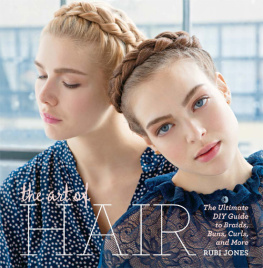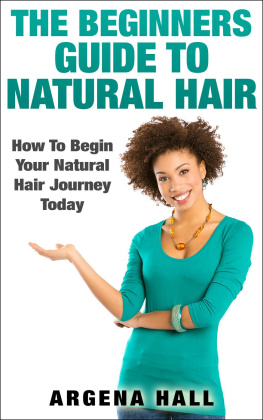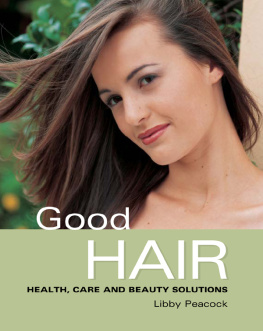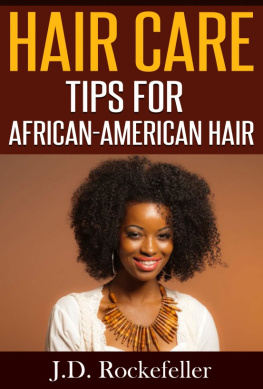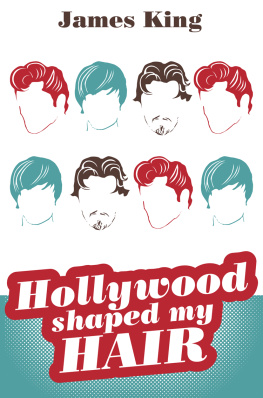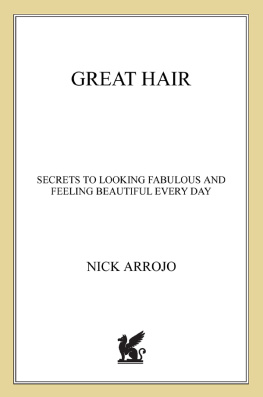1. The Basic Elements
When a person looks at you, what do they see? Your clothes, your face -- and your hair.
The "appearance" of your hair breaks down into a couple of different components. You've got more control over some of them than others. The part can be changed in seconds, the length in minutes, and the color in hours (changing the length in seconds is also possible, but not recommended unless you've just enlisted and are off to see the highly-efficient Army barbers).
Put together, these five elements make up the total "look" of your hair that an outside observer sees:
Color
The color of your hair is one of the two most immediately obvious elements (length is the other). Anyone who glances at you can make the color out.
How Is Hair Color Created?
Not all heads of hair achieve their color the same way. The same pale blond, for example, could be achieved by
a) thick strands of hair with a naturally light pigment
b) much finer strands of hair with a darker or more reddish pigment
c) naturally darker hair sun-bleached to a lighter blond
or, of course,
d) artificial dyes
All four of those are four different colors of actual hairs, but at a distance they all have the same pale yellow color.
So what color is your actual hair? To find that out you'll have to get up close and personal with a mirror and spend some time checking out the individual hairs. They may not even be uniform -- most people are darker near the roots, and some people's hair can vary dramatically from root to tip. You may also have a head of mixed hairs, particularly in the case of men who are starting to gray.
That means that most people's hair is a blending effect. That's useful for discerning dressers to know, since very starkly contrasted clothes look better with single-shade hair colors, while a more blended outfit that transitions smoothly from one color to the next goes better with hair made from blended colors.

But What Color Is Best?
The one that goes best with your complexion.
It sounds like a cop-out answer, but it's true. Your hair should complement your skin and eyes. A lot of the time this happens naturally. Guys are fortunately more resistant than girls, in general, to the temptation to dye their hair blond no matter what they actually look like, but you still see some horrorshows out there from time to time.
Contrast matters. If the rest of your complexion (eyes, skin, body hair, etc.) is high contrast -- like a pale-skinned man with dark eyes and hairs -- you don't want to throw that off by dying the top of your head pale. Similarly, low-contrast men -- think dark-skinned men with black hairs -- look jarring with hair that doesn't come close to matching the rest of their complexion.
Should Men Ever Dye?
A few generations ago the answer would have largely been "no." Hair dye was seen as purely a cosmetic change for women. These days, everything from bright green mohawks to lightly-dyed tips are common on men, especially younger men.
Men who work in any kind of office job should obviously be cautious with non-natural colors like red or green. Those are unlikely to go over well in the boardroom.
But a bit of artistic streaking or dying at the tips? Those things are largely acceptable these days. Men should keep contrast in mind, as always; light tips on dark hair will look much better on a high-contrast man than a low-contrast man. Some very conservative settings may still view it as unnecessary or frivolous, so be cautious of wearing the look in financial, legal, and other very traditional circles.
Cosmetic hair dyes will mostly fall into two categories: at-home applications, which generally (but not always) dye the whole head the same shade, and professional salon dyes, which can achieve any number of varied effects like dyed tips, two-tone splits, layered colors, and more.
If your goal is to make a bold statement, or to blanket gray hairs out of existence, home dyes can work. There are hundreds of brands available, of varying quality. For a neater, more professional-looking result, however, a man should usually visit a salon -- one that caters specifically to men, if possible. You don't want a hair stylist who's only done dyes for women doing your colors.
As to the dying of gray hairs, it's an individual choice. Some men swear by it. But the single-color blanket dyes used to hide them are often painfully obvious -- the sort of thing where anyone can look at you and say "yeah, okay, he's dying his hair to hide the gray." It's not a very dignified look. It puts people in mind of television broadcasters from the early 1980s.
If you're naturally ungraying, fantastic, but if not, put some thought into wearing your well-earned silver with pride, rather than blanketing it in dye. This is especially true for men whose hair is also thinning -- nothing is more painfully obvious than thinning hair with a bald spot that's been dyed a bright, youthful color.

Length
Apart from color, the most obvious trait of any haircut is its length. It's also the one that comes with the most social expectations and judgments attached.
The Basic Lengths
You can break hair down into three basic style families: short cuts, medium cuts, and long cuts.
Short hair can stand up on its own. Buzzcuts are short, as, obviously, are shaved heads. Slightly longer hairs worn spiked with product still look to observers like short cuts, though they may appear more like medium hair cuts when they lie flat.
Medium cuts encompass most traditional side-parts and other business styles. The hair is out of the eyes and mostly off the back of the neck, but it might be long enough to lie across the top of the head or tuck behind the ear.
Long cuts fall into the eyes, over the ears, or past the back of the neck. This could include anything from an unkempt mullet to a neat ponytail to a massively spiked mohawk that falls to the sides of the face when it's let down.


